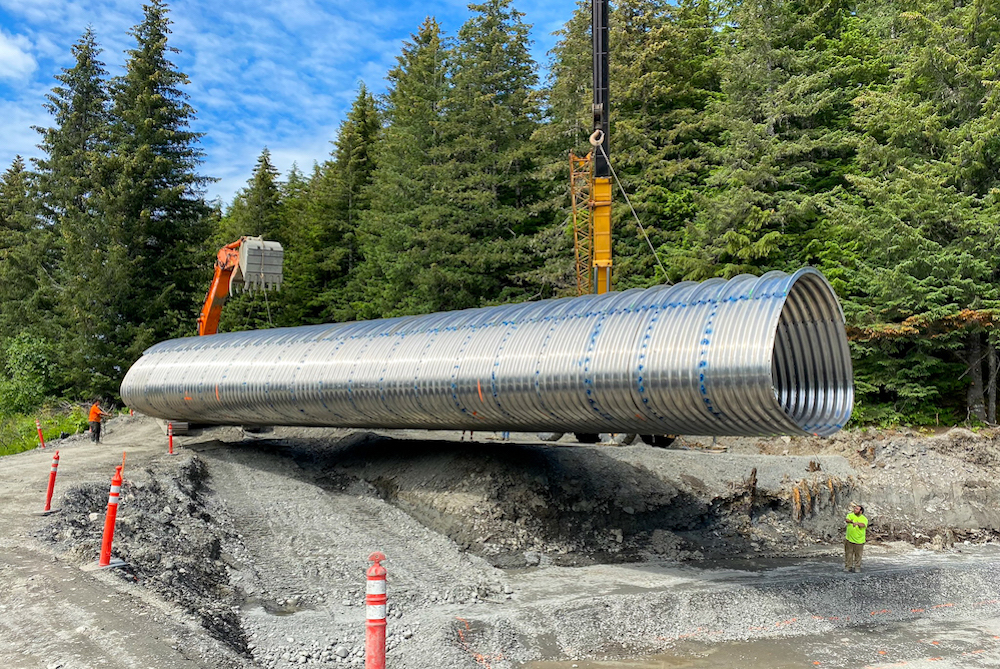
- Details
- By Chez Oxendine
- Food | Agriculture
An infrastructure project to breathe life back into southern Alaska's dwindling salmon population could restore a critical food source for Alaska Natives and bolster the region’s $20 million fishing economy.
Armed with $4.3 million in grant funding from the National Oceanic and Atmospheric Administration (NOAA), an Alaska Native corporation and nonprofit conservation group will partner to re-open 31 miles of streams and 740 acres of lake. The project, which includes the removal and replacement of road culverts that block fish passage at road-stream crossings, will give salmon access to spawning grounds. That, in turn, will improve access for fish migrations and subsistence fishing, according to representatives from the Eyak Corporation and the Copper River Watershed.
It’s important work for the ANC, says Eyak’s Cordova Office and Land Manager Tiffany Beedle. More than 85% of landowners along the Copper River Highway are Eyak shareholders.
“This work affects our lands directly,” Beedle told Tribal Business News. “It’s letting us open up these pathways and get a lot more fish back upriver.”
The partnership comes amid dwindling fish numbers in the Copper River. The salmon in question help stand up a local $20 million fishing economy, but also provide necessary sustenance for local tribes. Per an NOAA report, more than 90% of households in the Copper River Watershed utilize salmon. Many of those households harvest up to 318 pounds of fish a year.
The Copper River Highway, built in 1945, has long inhibited fish travel through the area, however. For every two miles of highway, a culvert is needed along its intersection with a stream. These culverts were intended to avoid interrupting the fish’s migratory paths - but some have fallen into disrepair, blocking the way, Beedle said.
“The ones we're working on now are failing pretty badly,” Beedle said. “It’s affecting the living here, both for subsistence fishing and economically. Probably 50 percent of our population do commercial fishing, too.”
The plan is to replace four such culverts this summer, Beedle said. That’s on top of prior work by NOAA and the Copper River Watershed Project, which repaired seven culverts last year.
“The great thing about our new partnership with The Eyak Corporation is that it opens up a whole new road system where we can fund restoration work,” said NOAA Marine Habitat Restoration Specialist Erika Ammann.
In many cases, existing culverts are replaced with “stream simulation” culverts, which better mimic natural stream flow. These culverts are wide enough to allow the streams to flow naturally, and have room for stones that more closely resemble natural stream bottoms.
“Basically we want anything traveling through the stream to not realize it’s passing under a road,” says Kate Morse, Program Director for Copper River Watershed Project in a NOAA statement. “We want a structure that can pass large volumes of water, sediment, and debris, and also provide fish passage at low water volumes.”
Work on the culverts comes amid a widespread acknowledgement of salmon shortages across Alaska, per prior Tribal Business News reporting. In some places salmon numbers have fallen by as much as 80 percent, devastating communities relying on the fish.
Native villages and ANCs point to private overfishing, climate change, and habitat damage as chief causes in the ongoing crisis. The Copper River Highway was similarly disastrous during its installation, Beedle said. Work like Eyak’s project with the NOAA goes helps repair both the river and cooperation between Native tribes and federal agencies.
“We’re starting to work together and see the fact that there’s science behind the way [Native Americans] do things, and that is a big cultural and traditional thing,” Beedle said. “We’re trying to go forward in a positive light.”
